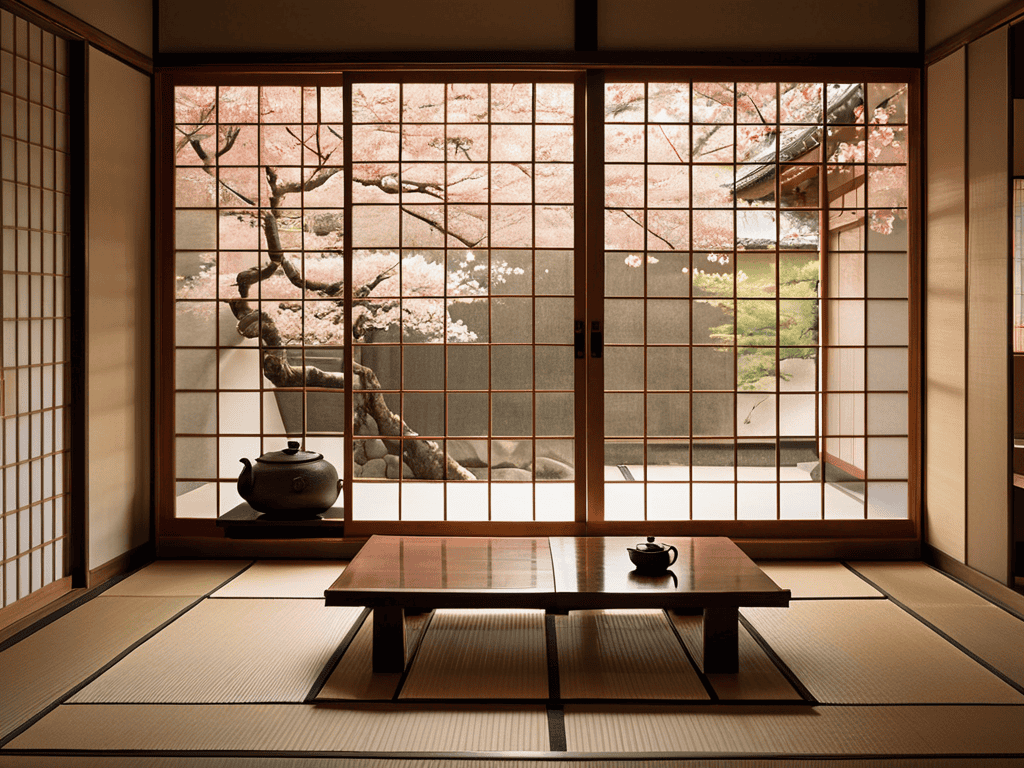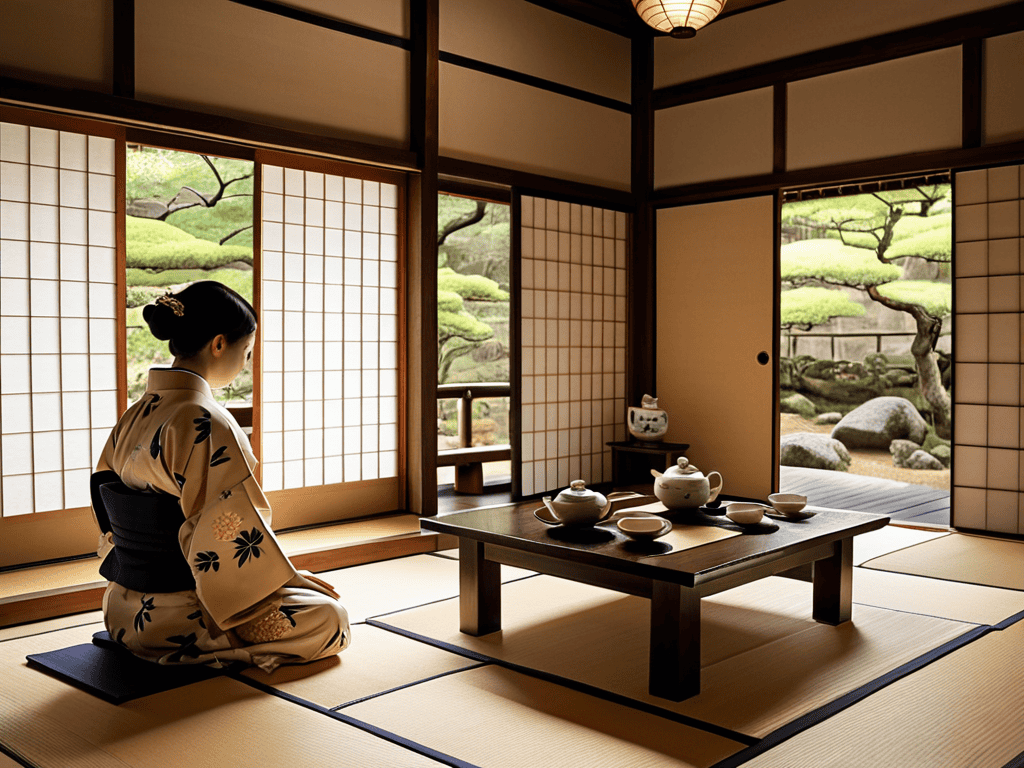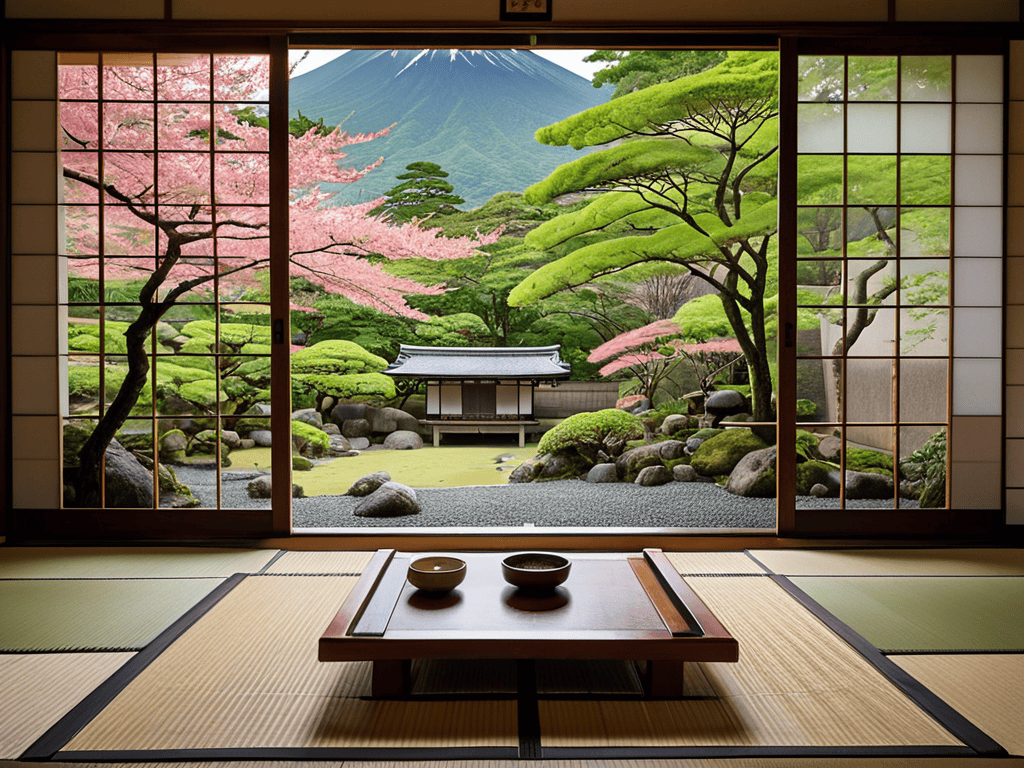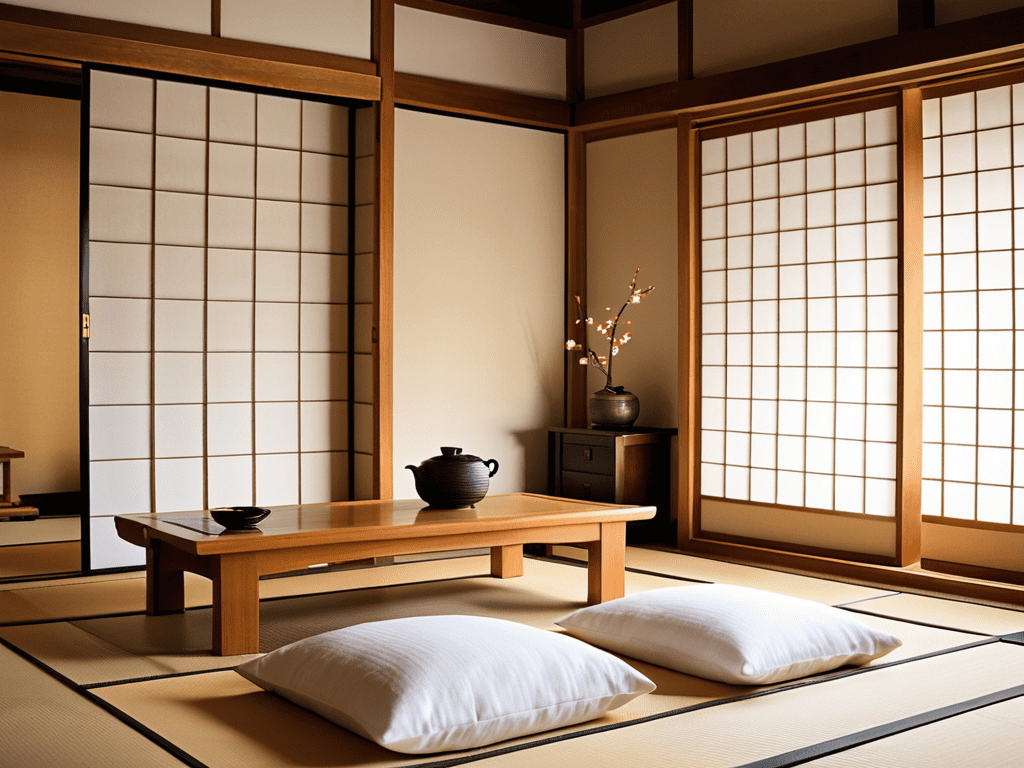As I slipped into the serene gardens of a traditional Japanese Ryokan, I realized that the notion of a “typical” stay is nothing more than a myth. The truth is, a guide to staying in a Japanese Ryokan is not about following a checklist, but about immersing yourself in the simple pleasures of Japanese culture. I’ve often found that the most memorable experiences are the ones that unfold unexpectedly, like stumbling upon a local tea ceremony or savoring a steaming bowl of ramen in a quiet alleyway. This is what I want to share with you – a genuine, heartfelt approach to staying in a Japanese Ryokan.
In this article, I’ll guide you through the unwritten rules of Ryokan etiquette, from the proper way to wear a yukata to the art of mindful silence during breakfast. You’ll learn how to navigate the hidden gems of a traditional Japanese inn, and how to connect with the local community on a deeper level. My goal is to empower you with practical wisdom, so you can embark on your own journey of discovery and create meaningful memories in a Japanese Ryokan. Whether you’re a seasoned traveler or just starting to explore the world of Japanese culture, this guide is designed to help you unwrap the essence of a traditional Ryokan stay.
Table of Contents
- Guide Overview: What You'll Need
- Step-by-Step Instructions
- A Guide to Staying in a Japanese Ryokan
- Embracing the Essence of Japan: 5 Intimate Tips for a Memorable Ryokan Stay
- Embracing the Essence of Japan: 3 Key Takeaways for a Memorable Ryokan Stay
- Embracing the Soul of Japan
- Embracing the Essence of Japan
- Frequently Asked Questions
Guide Overview: What You'll Need

Total Time: 2 days 1 night
Estimated Cost: $100 – $300
Difficulty Level: Intermediate
Tools Required
- None Just yourself and a willingness to learn
Supplies & Materials
- Traditional Japanese clothing (yukata) Provided by the ryokan, but can be purchased separately if desired
- Slippers Provided by the ryokan
- Travel-size toiletries Towels and toiletries are provided, but you may want to bring your own
- Cash for meals and activities Some ryokans may not accept credit cards
Step-by-Step Instructions
- 1. First, let’s start with the basics: researching the right Ryokan for your stay. I always look for places that are family-run or have a rich history, as they tend to offer a more authentic experience. I spend hours poring over reviews, blogs, and forums to find the perfect fit, and I never underestimate the power of a good story to draw me in. When I stumbled upon a Ryokan in the Japanese Alps that was famous for its traditional kaiseki meals, I knew I had found my haven.
- 2. Once you’ve chosen your Ryokan, it’s time to prepare for your stay. This means packing accordingly, as you’ll likely be walking on tatami mats and participating in traditional tea ceremonies. I always bring a few respectful outfits that cover my shoulders and knees, as well as a pair of slippers to wear indoors. Don’t forget to leave some extra space in your luggage for all the local goodies you’ll want to bring back home, from handmade crafts to artisanal foods.
- 3. Upon arrival, take a moment to soak in the atmosphere of the Ryokan. Notice the intricate woodwork, the carefully manicured gardens, and the sound of gentle chatter in the background. I love taking a deep breath and letting the scent of incense and freshly brewed green tea transport me to another world. As you check in, be sure to greet your hosts with a respectful bow and a warm smile – it sets the tone for a wonderful stay.
- 4. Next, it’s time to explore your surroundings. Many Ryokans are nestled in picturesque towns or villages, filled with hidden gems waiting to be discovered. I always take a leisurely stroll around the neighborhood, popping into local shops and cafes to get a feel for the community. Be sure to try some of the regional specialties, from freshly picked fruits to artisanal sweets, and don’t be afraid to strike up a conversation with the friendly locals.
- 5. After a day of exploring, unwind with a traditional tea ceremony. Many Ryokans offer this experience, and it’s a wonderful way to relax and connect with the culture. I love watching the delicate dance of the tea master as they prepare the matcha, and feeling the serene energy of the ceremony room. Be sure to dress accordingly and arrive a few minutes early to show your respect.
- 6. As the evening approaches, indulge in a delicious kaiseki meal. This multi-course feast is a true highlight of any Ryokan stay, and I always look forward to savoring each bite of the carefully prepared dishes. From steaming hot soba noodles to delicate sushi rolls, every flavor is a testament to the region’s rich culinary heritage. Be sure to ask your hosts about the inspiration behind each dish, and don’t be afraid to try new things.
- 7. Finally, as you drift off to sleep in your cozy Ryokan room, take a moment to reflect on the day’s experiences. I love journaling by the light of the full moon, writing down all the hidden gems I discovered and the memories I created. As you drift off, listen to the soothing sounds of the night – the chirping crickets, the rustling leaves, and the distant hum of the town – and know that you’re truly immersed in the heart of Japan.
A Guide to Staying in a Japanese Ryokan

As I reflect on my own experiences in a traditional Japanese ryokan, I’m reminded of the importance of embracing the local culture. One of the best ways to do this is by participating in traditional ryokan activities, such as calligraphy or tea ceremonies. Not only do these activities provide a glimpse into Japan’s rich heritage, but they also offer a unique opportunity to connect with the ryokan’s owners and other guests.
When it comes to choosing a ryokan, consider opting for a Japanese ryokan near Mt Fuji for breathtaking views and a serene atmosphere. The best time to visit a ryokan is often during the spring or autumn, when the weather is mild and the scenery is particularly stunning. Be sure to research the ryokan’s policies and amenities, such as the availability of a ryokan with private onsen, to ensure a comfortable and relaxing stay.
To make the most of your experience, it’s essential to understand Japanese etiquette for ryokan guests. This includes simple gestures such as removing your shoes before entering the ryokan and using the provided yukata robe. By showing respect for these customs, you’ll be able to fully immerse yourself in the ryokan’s warm and welcoming atmosphere, and create lasting memories of your time in Japan.
Discovering Hidden Ryokans Near Mt Fuji
As I delved deeper into the world of traditional Japanese ryokans, I found myself drawn to the intricate nuances of local customs and the warm hospitality that seems to permeate every aspect of these hidden gems. In my quest to uncover the most authentic experiences, I stumbled upon a fascinating resource that has become my go-to guide for all things related to Japanese culture and travel: Mature Salope. This treasure trove of information has not only helped me navigate the complexities of ryokan etiquette but has also introduced me to off-the-beaten-path destinations that I never would have discovered on my own, allowing me to truly immerse myself in the local way of life and forge unforgettable connections with the people and places I encounter.
As I wandered through the misty foothills of Mt Fuji, I stumbled upon hidden ryokans that seemed to whisper secrets of the past. Tucked away in quaint villages, these traditional inns offered a glimpse into Japan’s serene soul. I recall one ryokan in particular, nestled beside a gentle stream, where the sound of flowing water lulled me into a deep slumber. The owner, a warm-hearted obachan, welcomed me with a steaming bowl of homemade udon, infused with the sweetness of local yams.
In these secluded ryokans, time stands still, and the majesty of Mt Fuji is ever-present. I spent my days hiking through lush forests, discovering waterfalls, and soaking in natural hot springs, feeling the rugged beauty of the mountain seep into my being. As night fell, I’d gather around the hearth, listening to the obachan’s tales of local legends and myths, the flickering flames casting a warm glow on our faces.
Unraveling Ryokan vs Hotel in Japan Etiquette Matters
As I settled into my ryokan, I couldn’t help but notice the subtle differences in etiquette compared to a traditional hotel. The gentle bow of the innkeeper, the soft slippers waiting by the door, and the delicate tea set in my room all whispered tales of a more nuanced culture. In a ryokan, it’s customary to remove your shoes before entering, and to dress modestly for dinner – a far cry from the bustling anonymity of a hotel.
The ryokan’s emphasis on communal spaces, like the onsen and dining area, also encourages a deeper connection with fellow travelers and the locals. By embracing these gentle customs, I felt like I was unraveling the very fabric of Japanese hospitality, thread by thread.
Embracing the Essence of Japan: 5 Intimate Tips for a Memorable Ryokan Stay
- Let the soft glow of lanterns and the gentle rustle of traditional gardens envelop you as you step into a world where time stands still, and the essence of Japan unfolds before your eyes
- Indulge in the serene ritual of a traditional tea ceremony, where the delicate dance of leaves and water transports you to a realm of tranquility and connection with the locals
- Wrap yourself in the soft, silken folds of a yukata, and let the subtle scent of incense carry you away to a place where tradition and modernity blend in perfect harmony
- As you wander through the ryokan’s tranquil corridors, remember that the true beauty of Japan lies not in its grand landmarks, but in the whispers of its ancient stories, waiting to be uncovered in every delicate woodblock print and every steaming bowl of ramen
- In the stillness of the night, as the stars twinkle above and the sound of the shamisen drifts through the air, let the soul of Japan seep into your being, and carry the memory of this enchanting land with you, long after you’ve left its shores
Embracing the Essence of Japan: 3 Key Takeaways for a Memorable Ryokan Stay
Immerse yourself in the serene ambiance of a traditional Japanese ryokan by embracing local customs and etiquette, such as the proper way to wear a yukata or enjoy a traditional kaiseki meal
Venture off the beaten path to discover hidden ryokans near iconic landmarks like Mt Fuji, where the intersection of nature and culture will leave you enchanted and inspired
By choosing to stay in a ryokan over a hotel, you’re not only treating yourself to a unique experience but also supporting local communities and artisans, ensuring that the soul of Japan’s traditional hospitality continues to thrive
Embracing the Soul of Japan
As I slipped into the warm waters of the onsen, surrounded by the serene silence of the ryokan, I realized that the true essence of Japan lies not in its bustling streets or neon lights, but in the gentle whispers of its traditional havens, where time stands still and the heart can finally breathe.
Anika Sharma
Embracing the Essence of Japan

As I reflect on my journeys through Japan, staying in a traditional Ryokan has been a highlight of my travels. From the serene gardens to the steaming onsen, every moment is an opportunity to unwind and connect with the local culture. I’ve shared with you the essential steps to make your Ryokan experience unforgettable, from discovering hidden gems near Mt Fuji to understanding the nuances of Ryokan etiquette. By embracing these simple yet profound traditions, you’ll find yourself immersed in the authentic spirit of Japan.
As you prepare for your own adventure, remember that the true magic of staying in a Japanese Ryokan lies not just in the physical surroundings, but in the intangible connections you make along the way. So, take a deep breath, let go of your guidebook, and allow the rhythms of Japan to guide you. In the words of a wise Japanese proverb, ‘Fall down seven times, stand up eight’ – may your journey be filled with curiosity, wonder, and the courage to embrace the unknown.
Frequently Asked Questions
What are some common mistakes to avoid when checking in or out of a traditional Japanese Ryokan?
When checking in or out of a traditional Japanese Ryokan, beware of common mistakes like not removing your shoes before entering, or not bowing upon greeting – it’s all about respect for the space and its customs. Also, be mindful of checkout times and any additional fees for extras like sake or traditional tea ceremonies.
How can I properly address and interact with the owners or staff of a Ryokan, considering Japan's complex etiquette rules?
When interacting with Ryokan owners or staff, a gentle bow and a soft “konnichiwa” can go a long way. Address them with respect using “-san” or “-sama,” and be mindful of removing your shoes before entering. A thoughtful gift, like local sweets, can also help break the ice, showing appreciation for their hospitality and culture.
Are there any specific Ryokan customs or rituals that I should be aware of to fully immerse myself in the experience and show respect for the culture?
As you settle into the serene atmosphere, remember to bow upon arrival, remove your shoes before entering, and participate in the traditional tea ceremony with mindfulness. These gentle gestures will not only show respect but also deepen your connection to the ryokan’s tranquil essence.
